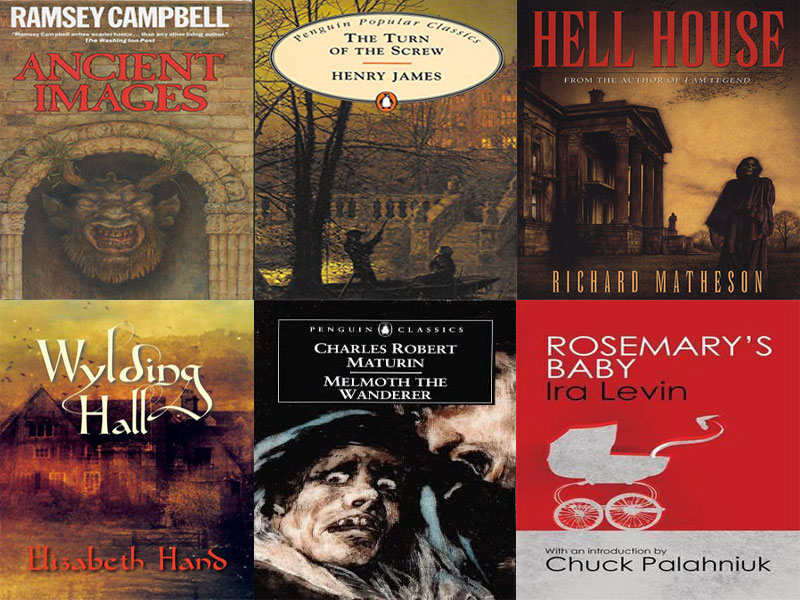
Considering how dystopian life has felt since the first lockdown in March, Halloween is going to be exceptionally unforgettable this year – for all the wrong reasons. But some stories still hold the power to spook and scare, so we at The University Times have compiled a list of eerie and gothic recommendations from some of the English department’s finest. Hopefully these will transport you out of your locked down reality, into an even scarier one – and maybe even ease the pain of not being able to throw on a pair of cat ears, stumble into an overpriced bar and eventually vomit into your pumpkin at 3am.
Prof Bernice M. Murphy
I recommend Ira Levin’s 1967 horror novel Rosemary’s Baby. Although the film adaptation is much better known, the novel showcases Levin at his very best. It’s a tightly written, suspenseful tale of a young woman who gradually begins to suspect that those closest to her may be planning to harm her unborn child.
The novel is, amongst other things, a classic urban horror story in which enforced physical and psychological proximity to one’s neighbours is a source of profound anxiety. The reader also grows to truly fear for the physical and emotional safety of heroine Rosemary, who is an extremely sympathetic figure.
The novel played a major part in helping to establish the 1970s horror boom, and has been often imitated, but never equalled. It’s also quite a short volume and can be read in one or two sittings – something which has been a rarity within the genre since the 1980s, in part thanks to Stephen King’s penchant for epic door stoppers.
Dr Dara Downey
My suggestion is that of Elizabeth Hand’s charmingly creepy novella Wylding Hall. Technically it’s set during the summer, in the long 1970s, but the coming darkness of autumn looms over the rambling old house where a group of promising musicians hole up to write their new album, in the aftermath of a recent tragedy.
Even through their haze of drugs and booze and sex, they start to notice that the house is larger and stranger than their manager let on, and that the locals don’t seem happy about it being occupied, particularly by a group of hippies with an interest in folklore and the occult, and a tendency to go poking where they don’t belong. It’s a quick read, but I find something new in it every time I read it – and you’ll never look at a wren the same way again!
Prof Jarlath Killeen
There is only one Gothic novel that should be required reading for any and all students of Trinity College Dublin: Charles Robert Maturin’s Melmoth the Wanderer. The novel was not only written by a graduate of the college, but opens with a young undergraduate receiving the news that he must leave his classes here to travel to county Wicklow to attend the death bed of his uncle, and he remains trapped in this rural house lockdown-style for the rest of the story.
Every Gothic terror you can imagine is to be found here – found documents, spooky portraits, cannibalism, demons, Satanic pacts, haunted castles, ghost stories around a fireplace, scenes of extraordinary torture, the Spanish Inquisition, and an open-ended conclusion that sets things up for future instalments.
But the most disturbing scenes involve Maturin’s extraordinarily penetrating depiction of effects on the bureaucratic mind of the tedium and regularity required to keep the modern world ticking over. H. P. Lovecraft praised it as a masterpiece in which “the Gothic tale climb[ed] to altitudes of sheer spiritual fright which it had never known before”. It’s very long, formally complex, frustrating, confusing, and completely unforgettable.
Dr Kevin Power
There is no spookier or more unnerving work of fiction in the English language than Henry James’s novella The Turn of the Screw. Narrated by a governess who has been assigned to raise two bright children in a remote country house called Bly, it’s superficially a ghost story. Are the malevolent spirits of the former governess, and her lover Peter Quint, menacing the children from beyond the grave? Perhaps. Or perhaps it’s the governess herself who is, in her loneliness and tender cruelty, the true evil haunting Bly.
For more pulpy thrills, I recommend two much more recent novels. Richard Matheson’s Hell House is the cheesy successor to Shirley Jackson’s The Haunting of Hill House. A group of psychic investigators set up shop in the haunted house of the notoriously corrupt Emeric Balasco. No subtlety here – the ghosts are real and the horrors pile up one after the other. It’s preposterous, and highly entertaining.
Finally, Ramsey Campbell’s underrated (indeed, rather obscure) 1989 novel Ancient Images about a cursed horror film and the legacy of the evil Redfield family, mingles the atmospheres of folk horror and urban thriller to highly disturbing effect.






